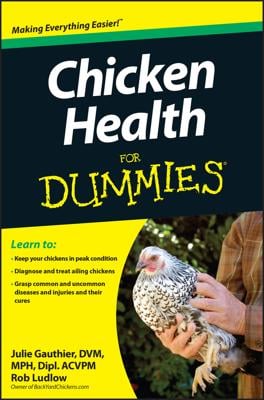Bumblefoot generally occurs in heavy roosters, but it can affect other birds as well. It’s caused by a cut or even a small scrape to the bird’s foot that gets contaminated by bacteria, usually staph. Rough perches and wire cage floors are common causes of these cuts and scratches. Large, heavy birds that jump down from high perches also can injure their foot. Look for these signs to diagnose bumblefoot:
-
A large swelling on the bottom of the foot or on a toe that may feel soft in early stages and hard later.
-
The foot looks red and inflamed and may feel hot to the touch. A black scab usually forms over the sore.
-
The bird may limp and refuse to do much walking.
Use gloves to examine or treat birds suspected of having bumblefoot, because the staph or other bacteria that cause the abscess can infect humans. Put the bird in a cage with clean, soft litter such as pine shavings. Isolate the bird from other chickens because the bacteria could infect them too.
In early stages, administering antibiotics may be all that’s needed. Several registered antibiotics are available for chickens: lincomycin and amoxicillin are two common ones. Many can be purchased at farm stores, or you can ask a veterinarian where to get them. Read and follow the label directions to determine the correct dosage and find out how to administer the antibiotic to birds. You must give the antibiotics for the full time the label directs.Soaking the foot also helps, especially if the injury has progressed to the hard stage. Put a cup of Epsom salts in a dish pan of hot water — water that feels hot but doesn’t burn your hand. Then hold the chicken’s foot in the pan until the water cools, about 10 to 15 minutes. Don’t let the bird drink any of the water.
The soaking should soften the abscess. Gently remove the scab, and try to open the wound by pulling it apart at the wound edges rather than squeezing it. Rinse the wound with hydrogen peroxide, and try to gently clean out any pus. Then apply an antibiotic ointment that’s safe for birds (ask a vet for a recommendation).
Pad the wound with a clean gauze pad, and wrap it with first-aid tape or vet wrap. The wound should be cleaned, flushed, and rewrapped once a day until it looks like it's healing. All dressings and soaking fluids will be loaded with bacteria and should be disposed of carefully.
Leave the treatment of such an abscess to a vet if soaking and pulling apart the wound edges doesn’t open the wound so it can drain and be cleaned. Watch birds being treated with antibiotics for diarrhea, which is caused by good bacteria that’s also being destroyed, and add some “digestive health yogurt” to the chicken’s diet to help restore it.

